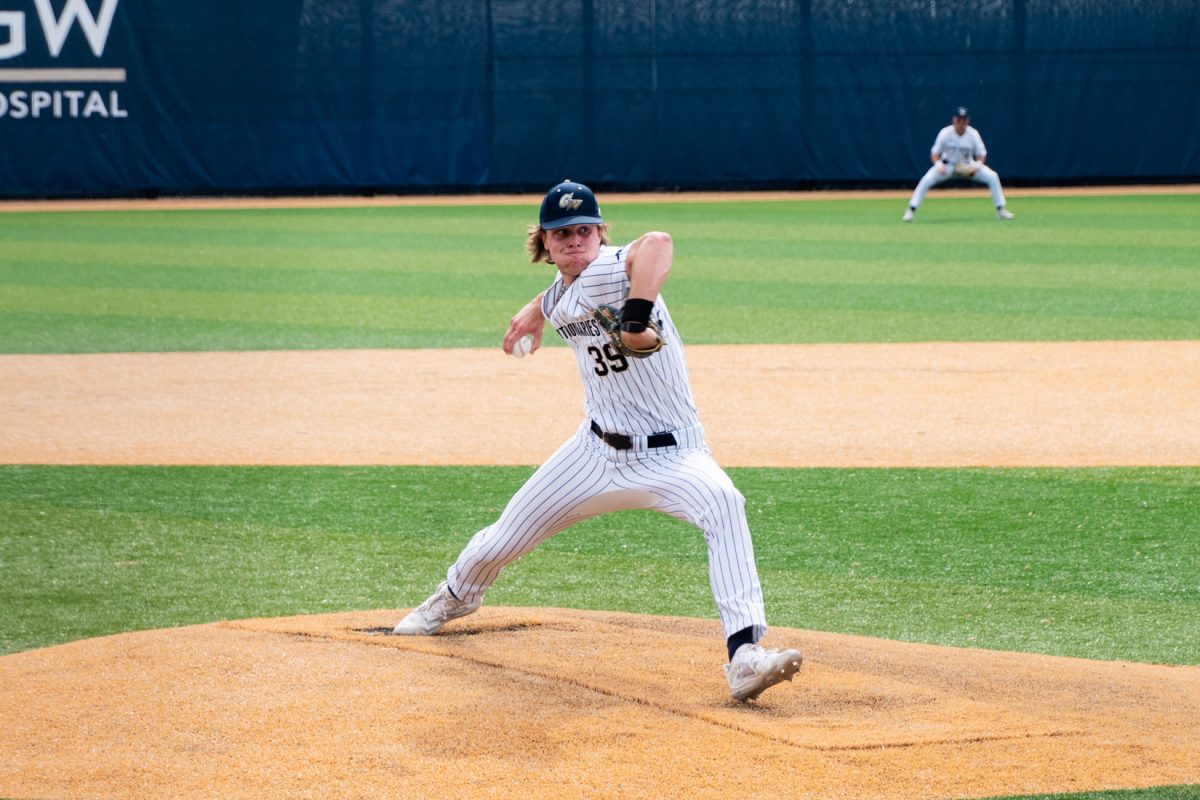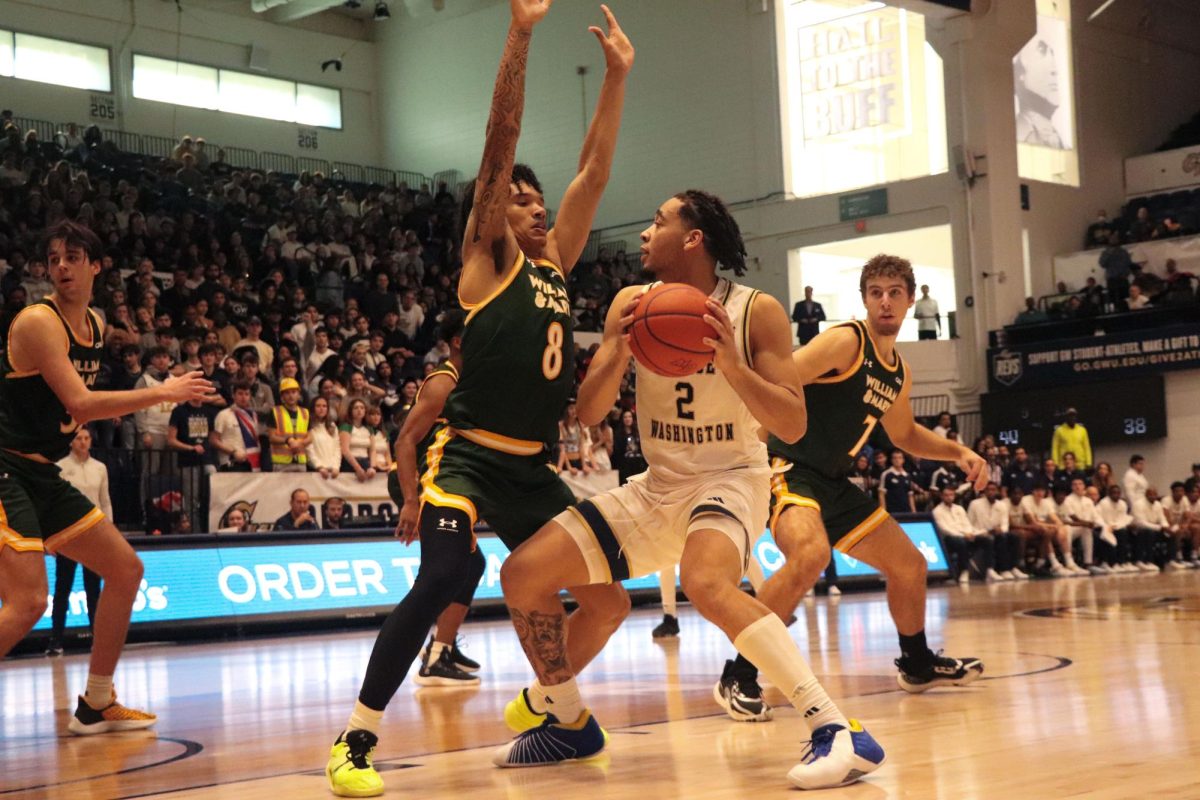After reading every message board complaint and being stopped on the street by people that only talk to me about GW basketball, about the supposed lackluster nature of the 2005-2006 GW men’s basketball schedule, it was time. Time to attempt to explain the logic behind Director of Athletics Jack Kvancz and head coach Karl Hobbs’ selection of out-of-conference opponents.
On Aug. 25, The Hatchet released the 2005-2006 men’s and women’s basketball schedules. Only hours later, fans throughout the GW campus were questioning the motives of Kvancz in booking a superficially easy schedule. While a schedule rife with relatively unknown opponents may not be the most appealing for GW’s fans, many do not realize the intricate nature of scheduling college basketball games.
For example, a gander at the women’s schedule shows the long-term success that Joe McKeown has enjoyed in his years in Foggy Bottom. Hosting Tennessee is unbelievable because the Smith Center is probably the smallest crowd the Vols will play in front of all year. But for Hobbs’ squad, the situation is slightly different.
Regardless of how clich? it sounds when Hobbs says it, GW is not at the level of Xavier, Dayton and Richmond. The GW men’s basketball program is at a transitional stage that many people who are caught in the moment of initial success do not understand. Last year, the Colonials captured their first Atlantic 10 championship and reached the NCAA tournament for the first time since 1999. When it comes to immense respect from the NCAA tournament selection committee, the Colonials do not necessarily deserve it. They have had one year of success. In no way does this assessment belittle the accomplishments of Hobbs and his coaching staff, which has done an outstanding job building a program up from scandal and turmoil.
Hobbs has brought the Colonials from nothing to a quasi- powerhouse in the A-10. Teams now come into the Smith Center with heightened nerves expecting fans to be in their face about everything from their looks to the perceived sub-par education at their universities. The newfound respect that journalists and coaches have for the GW program is a double-edged sword. Yes, the Colonials may get a shout-out on ESPN and a full-time beat writer from The Washington Post, but when it comes to scheduling quality opponents, athletic directors may think twice.
When an athletic director at a school like Kansas or North Carolina goes to buy an out-of-conference opponent, they want to play a team they have a good chance of beating. Why should a top-level team schedule GW when they can get Fairfield and a near-guaranteed win? The Metro Atlantic Athletic Conference has a respectable rankings percentage index and a historically powerful team will not have trouble beating a Fairfield or Niagra.
When these top-level squads clash with each other, this theory is thrown out. A loss to another powerful squad will be considered a “good loss” in the eyes of the tournament selection committee and does not detrimentally affect either teams’ RPI.
But when GW was announced as a 12 seed in the NCAA tournament last season after winning the A-10 championship, it was evident that the Colonials would not have received an at-large bid.
In comparison to last year’s schedule, this year’s is not much different. With the changed format of the BB&T, the Colonials will only face one high-profile opponent instead of two. Also, the Colonials will not face a team of the same caliber of West Virginia.
In place of West Virginia, the Colonials will face a bolstered A-10 conference that includes newcomers Charlotte and St. Louis. The 49ers of Charlotte are consistently in the RPI top 50, and with GW clashing with them in the Smith Center and in North Carolina, another conference bully will almost certainly emerge.
But during those games in Charlotte and Cincinnati, the Colonials play in front of hostile crowds that consider buff and blue nearly as bad as Communist red. Before fans criticize Kvancz and Hobbs, whom Kvancz says is an integral part of the scheduling process, they should consider the implications that high-profile away games present. Playing at a place like Kansas or UCLA would limit the number of tickets allocated to students.
So how about home you ask? Not a possibility. The Smith Center, which seats only 5,000 fans, will never draw big-name teams. Most big schools tell recruits that they will never play in a building that seats less than 10,000 people.
According to one source close to the scheduling process, the MCI Center costs $100,000 to open the doors. Add on security, which is necessary, and the price will go up exponentially. The BB&T is slightly different because proceeds go to charity. But with the Colonials’ new-found success, it has been rumored that Maryland won’t stay in for much longer. The chances of a team such as Michigan State spending close to $1 million to play in Washington? Almost none.
About a month ago, I spoke to a GW player about the schedule and his feelings toward the program. He was disappointed with the out-of-conference opponents but understood the bind that GW is in.
Wow, he actually understood? Unlike most fans, players are not shortsighted and understand that a sub-par schedule may hurt a bit, and that the team knows it needs to win.
Kvancz, a former member of the NCAA tournament selection committee, understands too. When asked if the Colonials will need to win the conference this year to make the NCAA tournament, he put it very simply.
“This is a year we’ll have to win. Period.”







